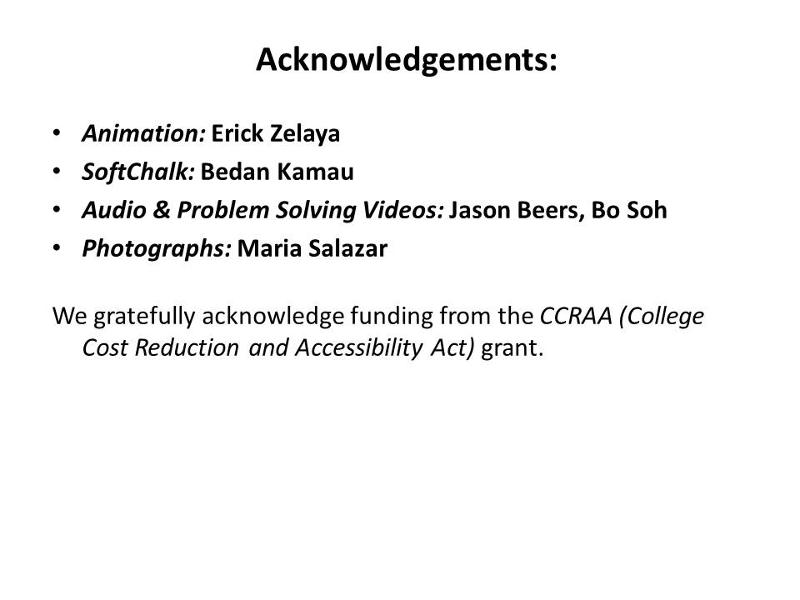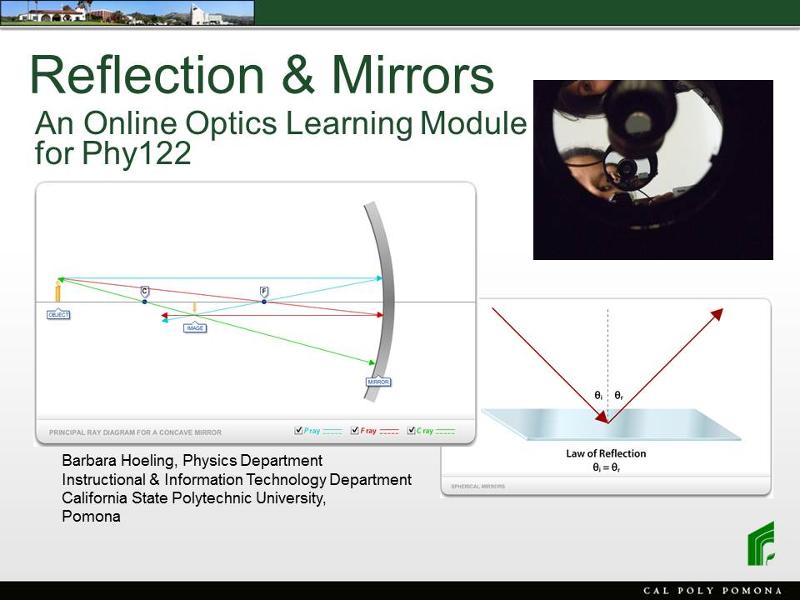
Reflection & Mirrors
an Online Optics Learning Module for Phy122

In this online learning tool, you can study how light rays are reflected from different types of mirrors: plane mirrors, spherical concave mirrors, and spherical convex mirrors. You will also learn how images are formed by mirrors, and what type of mirror you want to use for, say, your car's rear view mirror, or a make-up mirror.
Let me explain briefly how you should work with this tutorial. The tutorial contains pages with graphics and narration explaining the physics. There are also interactive animations that allow you to do "virtual" experiments, and to explore these concepts in more detail. Please take your time playing with the interactive animations, and make sure you are observing carefully what happens. In addition, there are videos where I am working out problem solutions. The questions posed throughout the tutorial are meant to guide you in your studies, and to help you identify the key points you have to understand.
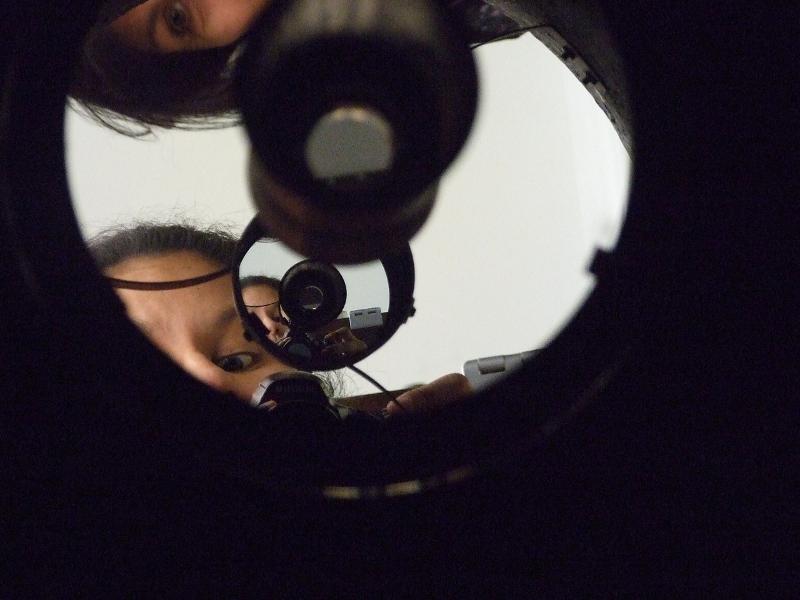
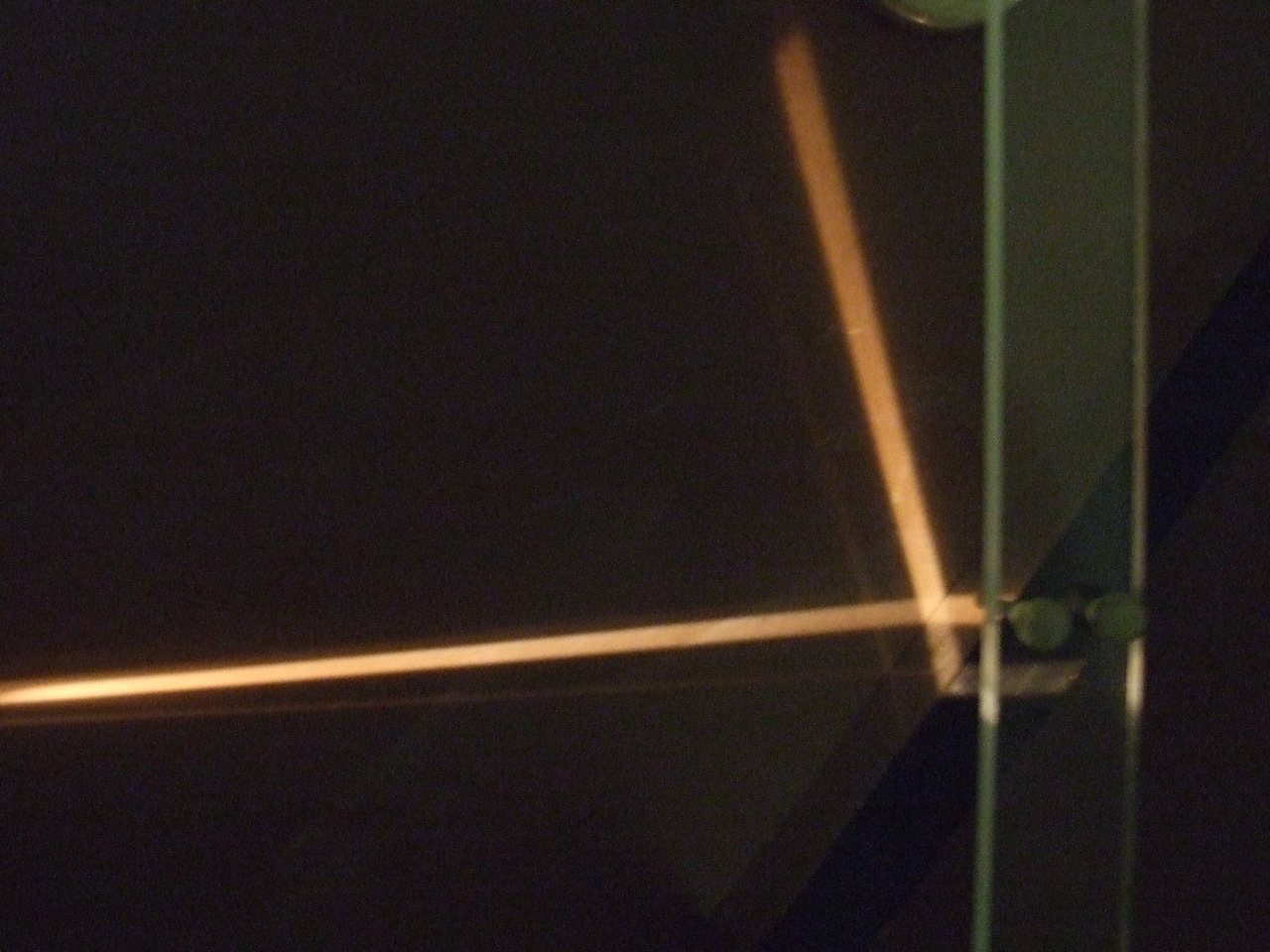
Most of us use mirrors every day, and we all know what our images in a flat mirror look like: They are the same size we are, the same distance behind the mirror as we are in front of it, and left/right reversed. But how does this happen?
If you shine a laser beam onto a flat, or plane, mirror, you can see that the beam is reflected in a symmetric fashion: it leaves the mirror surface at the same angle it hit it. The interactive simulation on the next slide allows you to explore this principle for yourself.
In this interactive animation, you can rotate a laser beam and change the angle at which it hits a plane mirror. Move the laser around and observe what happens: as you change the direction of the incoming (or incident) beam, the direction of the reflected beam changes accordingly. We can express this quantitatively by saying: "The angle of incidence is equal to the angle of reflection". This is called the law of reflection.
Let's take a moment to think about exactly what angles we are talking about: As it is shown in the animation, the angle of incidence is the angle between the incoming laser beam and the "normal" to the mirror surface. By a "normal", mathematicians mean a line that is perpendicular, or at right angles, to another line or surface. So the normal to the mirror surface is the line that is perpendicular to the mirror surface. This is the line relative to which we measure the angles of incidence and of reflection. This is a very important point for all of the following discussions about reflection and refraction. Obviously, the angle that the incoming laser beam makes with the mirror surface itself and the angle that the reflected beam makes with the mirror surface are also equal. However, these angles are not what we need to consider, and they have no special names.

Not all mirrors are flat, of course. Now we want to consider two special cases of mirrors, both of which are pieces of a shiny sphere. Convex spherical mirrors are the outside of a reflecting sphere (or a part of it), and concave spherical mirrors are a piece of the shiny inside of a sphere. You can also think of a metallic spoon, although spoons are not always precisely a part of a sphere. The back side of the spoon is a convex and the inside a concave mirror.
We can figure out what happens when light hits a convex mirror simply by using the law of reflection – that's all the physics we need, the rest is geometry! For every ray that is incident on the spherical mirror, the angle of incidence is equal to the angle of reflection. Since these angles are measured relative to the normal of the mirror surface, the trick is to find the normal for every point on the mirror surface. But since the mirror surface is part of a sphere, that's easy: all lines that start at the center of the sphere, i.e., all radial lines, are perpendicular to the surface of the sphere at the point where they poke through it!
That's all we need to know to construct the reflected rays for a few incoming rays that are parallel to the optical axis, and also close to it. These rays are all reflected as if they were coming from a point that is half-way between the center and the surface of the sphere. This point is the focal point of the convex mirror. The distance from the mirror surface to the focal point is the focal length of the mirror, and as you can see, it is half the radius of the mirror. The reflected rays are not actually coming from the focal point, they are just reflected as if they would originate there. The convention is therefore that the focal length f of a convex mirror is negative: f = - R/2 , where R is the radius of the sphere.
Let's now do the same thing for a concave mirror. Again, the radial lines are normal to the mirror surface. If we construct the reflected rays for a few rays parallel and close to the optical axis, we can see that they all intersect at one point on the optical axis. This point is half-way between the center of the sphere and the mirror surface and – you guessed it – is called the focal point of the concave mirror. For this type of mirror, the reflected rays actually do pass through the focal point, so by convention, the focal length f of a concave mirror is positive: f = +R/2, where R is again the radius of the sphere.
We know that not only a plane mirror produces an image of an object in front of it – a convex spherical mirror does, too! Just look at the back of a metal spoon if you don't believe it!
This interactive animation shows you how such an image arises, and how its position and size can be found. Use your mouse to move the object, the candle, along the optical axis, and observe how the position and size of its image change.
You can also explore how the image is constructed, by turning on and off the principal rays. These are the three special rays that are used for the construction of the image. The first one is parallel to the optical axis and is therefore called the P-ray. It is reflected as if it came from the focal point of the mirror. The second one is the one that goes through the center of the sphere, the C-ray, which is reflected back into itself. The third is the F-ray, which would go through the focal point and is reflected parallel to the optical axis. The image of the tip of the candle is the point where these rays meet (or seem to meet) after they were reflected.
It might not come as a surprise that the image of the candle is actually located behind the convex mirror, so it's a virtual image. The reflected rays to not actually meet at the position of the image, they just emerge from the mirror as if they came from there. Of course, that's the same as with a plane mirror. But you'll notice that there is also a difference: the image of a plane mirror is the same size as the object, while for a convex mirror, the image is always smaller than the object.

What about concave mirrors? Can they produce images, too? This interactive animation shows that indeed, a concave mirror does produce an image of an object in front of it.
Move the object, the candle, with your mouse to explore how the location and the size of the image change with the position of the object. Like in the interactive animation for the convex mirror, you can turn on and off the three principal rays to study how the image is constructed.
Try to answer the following questions: for what position of the object is the image virtual (i.e., located behind the mirror)? Is this virtual image upright or inverted? Is it smaller or larger than the object?
Can you find locations of the object for which the image appears at the same side of the mirror? In this case, the reflected rays actually come together in the image, so this is a real image. Is the real image upright or inverted? Larger or smaller than the object?
If you cannot answer all of these questions right away, continue with the next slides, and come back to this interactive animation after you have worked through the two video problems.


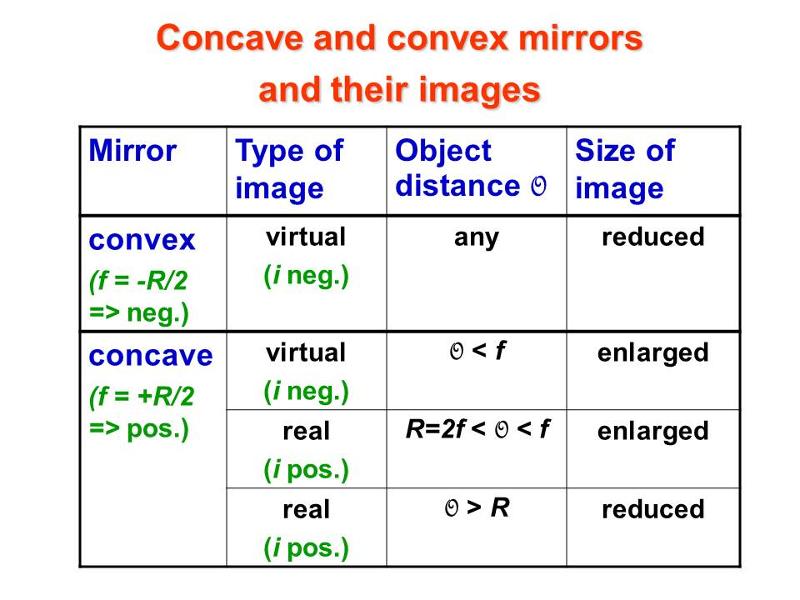
This page summarizes the results on spherical mirrors we have derived. The mirror equation, 1/f = 1/i + 1/o, is valid for both convex and concave spherical mirrors. The focal length is R/2, negative for convex and positive for concave spherical mirrors, where R is the radius of the sphere.
A convex mirror always produces a virtual, upright, and reduced image, no matter where the object is located.
A concave mirror makes a virtual image, if the object is closer to the mirror than the focal point, and this virtual image is upright and enlarged. If the object is located between the focal point and the center of the sphere, the image is real, upside down, and enlarged. Finally, if the object is further away from the mirror than the center of the sphere, the image is real, upside down, and reduced.
Remember that our derivations for spherical mirrors were done under the approximation that the rays we considered were close to the optical axis. Another way of saying this is that our images were always small compared to the focal length of the mirror. If that's not the case, the image will be blurred.
There are many shapes of mirrors other than spherical ones. Parabolic mirrors are especially important since they bundle all parallel incoming rays (not only those close to the optical axis) into one focal point. That's why they are often used in telescopes. But no matter what their shape, for all mirrors, the law of reflection holds: the angle of incidence is equal to the angle of reflection.
